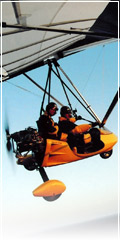Wing Tuning & Troubleshooting
Our trike wings have undergone a rigorous test-flying program in a wide range of conditions.
As a result, your wing is precisely tuned to achieve maximum flying performance. Therefore, it should not be necessary to make any changes in your wing tuning or configuration. If you have any questions, please contact your authorized North Wing dealer.
If any adjustments are made on your glider, we recommend that they be noted in your Maintenance Log.
It is then easy to go back and trace occasional problems. Please bear in mind that certain adjustments, like the cross tube sweep setting, are very critical and often create trade-offs in handling, performance, or --more seriously-- safety.
| Troubleshooting Chart | ||
| Symptom | 1st solution | 2nd solution |
| Tail heaviness (flies too slow) | D, B | I |
| Nose heaviness (flies too fast) | C, B | |
| Right Turn | A, B, K | Q, F, I |
| Left Turn | A, B, K | P, E, I |
| Yaw unstable (roll response lag) | L | N |
| Roll, too unstable | A, B, R | T, N |
| Roll, too stable | A, B, L | O, E |
| Breaks left in stall | B | J, P |
| Breaks right in stall | B | K, Q |
| Trailing edge flutter | A, S | O |
The troubleshooting chart offers you a first solution (first action to be taken) and then a second (or more) solution for any possible problems you may encounter.
Please investigate each problem as indicated by the chart. Never make more than one change at a time.
This is a basic rule in test flying, which allows you to keep track of the progress made.
| Troubleshooting Chart Action Key |
| A. Check for proper assembly, crossbar setup cable not fouled on pivot block. All ribs secured, check for proper position of sprogs and trailing edge rib strings. |
| B. Match all ribs to the airfoil maintenance blueprint provided with your wing. |
| C. Move hang block back (1/2" at a time). |
| D. Move hang block forward (1/2" at a time). |
| E. Increase camber on last 2 cambered left tip ribs by 1/4", or decrease the same on right tip by 1/4". |
| F. Increase camber on last 2 cambered right tip ribs by 1/4", or decrease the same on left by 1/4". |
| G. Decrease camber on last 2-cambered tip ribs on both sides, 1/4" at a time. |
| H. Increase camber on last 2-cambered tip ribs on both sides, 1/4" at a time. |
| I. Check leading edges for straightness, and replace if bent. |
| J. Increase the tension of the right leading edge pocket, or loosen the tension of the left leading edge pocket. |
| K. Increase the tension of the left leading edge pocket, or loosen the tension of the right leading edge pocket. |
| L. Loosen leading edge pocket on both sides. |
| M. Tighten leading edge pocket on both sides. |
| N. Loosen rib tension on both sides symmetrically, except for #1 and last 2 ribs. |
| O. Tighten rib tension on both sides symmetrically, starting at the tips. |
| P. Tighten rib tension on the left side ribs #1-4. |
| Q. Tighten rib tension on the right side ribs #1-4. |
| R. Loosen tension on ribs #2-4, both sides, to remove excess reflex from these ribs. |
| S. Tighten rib tension in the locality of each problem area. |
| T. Tighten the rigging tension of the cross bar restraining cable by using the adjustable tangs on the rear shackle. |
| U. Loosen the rigging tension of the cross bar restraining cable by using the adjustable tangs on the rear shackle |
| * To modify leading edge tension, slip the tip webbing off the trim tip plug and slide the sail forward. You will see that on the trim tip plug (between the plug and the LE tube there are pieces of tubing cut to 1/8 and 1/4 long, these are shims. These are what you need to put in or take out to change LE tension. Then replace the trim tip plug and the tip webbing. |
| Make sure the screws are inline with the mark on the LE when it was removed. |


